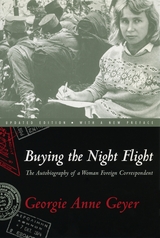
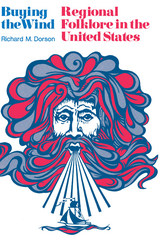
Their tales, songs, riddles, proverbs, games, superstitions, and customs provide a wealth of living folklore presented here as it was recorded in the field. And this unvarnished folklore fact—retains the spicy flavor of authentic narrative, told in the vernacular of the skillful folk storyteller.
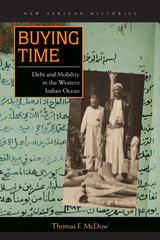
In Buying Time, Thomas F. McDow synthesizes Indian Ocean, Middle Eastern, and East African studies as well as economic and social history to explain how, in the nineteenth century, credit, mobility, and kinship knit together a vast interconnected Indian Ocean region. That vibrant and enormously influential swath extended from the desert fringes of Arabia to Zanzibar and the Swahili coast and on to the Congo River watershed.
In the half century before European colonization, Africans and Arabs from coasts and hinterlands used newfound sources of credit to seek out opportunities, establish new outposts in distant places, and maintain families in a rapidly changing economy. They used temporizing strategies to escape drought in Oman, join ivory caravans in the African interior, and build new settlements.
The key to McDow’s analysis is a previously unstudied trove of Arabic business deeds that show complex variations on the financial transactions that underwrote the trade economy across the region. The documents list names, genealogies, statuses, and clan names of a wide variety of people—Africans, Indians, and Arabs; men and women; free and slave—who bought, sold, and mortgaged property. Through unprecedented use of these sources, McDow moves the historical analysis of the Indian Ocean beyond connected port cities to reveal the roles of previously invisible people.

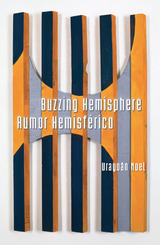
In this expansive collection, we hear the noise of cities such as New York, San Juan, and São Paulo abuzz with flickering bodies and the rush of vernaculars as untranslatable as the murmur in the Spanish rumor. Oscillating between baroque textuality and vernacular performance, Noel’s bilingual poems experiment with eccentric self-translation, often blurring the line between original and translation as a way to question language hierarchies and allow for translingual experiences.
A number of the poems and self-translations here were composed on a smartphone, or else de- and re-composed with a variety of smartphone apps and tools, in an effort to investigate the promise and pitfalls of digital vernaculars. Noel’s poetics of performative self-translation operates not only across languages and cultures but also across forms: from the décima and the “staircase sonnet” to the collage, the abecedarian poem, and the performance poem.
In its playful and irreverent mash-up of voices and poetic traditions from across the Americas, Buzzing Hemisphere / Rumor Hemisférico imagines an alternative to the monolingualism of the U.S. literary and political landscape, and proposes a geo-neuro-political performance attuned to damaged or marginalized forms of knowledge, perception, and identity.


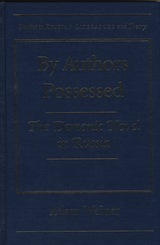
Weiner contends that the theme of demonism increasingly infects the narrative point of view from Gogol's Dead Souls to Dostoevsky's The Devils and Bely's Petersburg, until Nabokov exorcised the demonic novel through his fiction and his criticism. Starting from the premise that artistic creation has always been enshrouded in a haze of moral dilemma and religious doubt, Weiner's study of the demonic novel is an attempt to illuminate the potential ethical perils and aesthetic gains of great art.


Tahar Ben Jelloun’s By Fire, the first fictional account published on the Arab Spring, reimagines the true-life self-immolation of Mohamed Bouazizi in Tunisia, an event that has been credited with setting off the Tunisian revolt. The novella depicts the days leading up to Bouazizi’s self-immolation. Ben Jelloun’s deliberate ambiguity about the location of the story, set in an unnamed Islamic country, allows the reader to imagine the experiences and frustrations of other young men who have endured physical violence and persecution in places beyond Tunisia. The tale begins and ends in fire, and the imagery of burning frames the political accounts in The Spark, Ben Jelloun’s nonfiction writings on the Tunisian events that provide insight into the despotic regimes that drove Bouazizi to such despair. Rita S. Nezami’s elegant translations and critical introduction provide the reader with multiple strategies for approaching these potent texts.

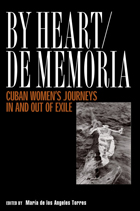

Brady doesn't resort to dissecting poems here, though poems-his own and those of many of his masters, from Yeats to Tu Fu-do appear. Instead, the poetic language of his observations seems to fulfill a greater purpose: “Voiced, the poem is transfigured from a printed glyph to sensory language: ephemeral, but with a tensile strength derived from the collective memory that births it. Critics may feel differently, but what matters to a poem is not how many times it is reprinted, but how deeply it penetrates the heart.”
These essays are meditations grounded in the author's life as a poet, teacher, publisher, musician, traveler, and organizer. In one, readers encounter non-traditional students who attend class after work and whose lives are already shaped by burden. Brady recognizes the tension between reading poetry as an academic exercise and reading it for its power to endow all people with a broader sense of the self that is informed by both the dead and the living. He celebrates the challenges that his students bring to the classroom by forging headlong into discussions that other instructors would cringe at-as when a student declares that he doesn't like reading old poetry but instead likes greeting-card poems. Brady masterfully turns this potentially deflating moment into one that is both validating and deeply inspiring-for student and reader.
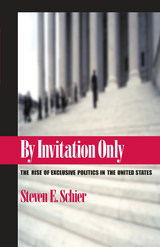
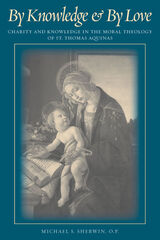
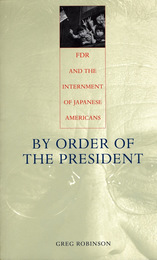
On February 19, 1942, following the Japanese bombing of Pearl Harbor and Japanese Army successes in the Pacific, President Franklin Delano Roosevelt signed a fateful order. In the name of security, Executive Order 9066 allowed for the summary removal of Japanese aliens and American citizens of Japanese descent from their West Coast homes and their incarceration under guard in camps. Amid the numerous histories and memoirs devoted to this shameful event, FDR's contributions have been seen as negligible. Now, using Roosevelt's own writings, his advisors' letters and diaries, and internal government documents, Greg Robinson reveals the president's central role in making and implementing the internment and examines not only what the president did but why.
Robinson traces FDR's outlook back to his formative years, and to the early twentieth century's racialist view of ethnic Japanese in America as immutably "foreign" and threatening. These prejudicial sentiments, along with his constitutional philosophy and leadership style, contributed to Roosevelt's approval of the unprecedented mistreatment of American citizens. His hands-on participation and interventions were critical in determining the nature, duration, and consequences of the administration's internment policy.
By Order of the President attempts to explain how a great humanitarian leader and his advisors, who were fighting a war to preserve democracy, could have implemented such a profoundly unjust and undemocratic policy toward their own people. It reminds us of the power of a president's beliefs to influence and determine public policy and of the need for citizen vigilance to protect the rights of all against potential abuses.

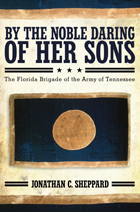
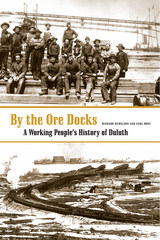
In By the Ore Docks, Richard Hudelson and Carl Ross trace seventy years in the lives of Duluth’s multi-ethnic working class—Scandinavians, Finns, Italians, Poles, Irish, Jews, and African Americans—and chronicle, along with the events of the times, the city’s vibrant neighborhoods, religious traditions, and communities. But they also tell the dramatic story of how a populist worker’s coalition challenged the “legitimate American” business interests of the city, including the major corporation U.S. Steel.
From the Knights of Labor in the 1880s to the Industrial Workers of the World, the AFL and CIO, and the Democratic Farmer-Labor party, radical organizations and their immigrant visionaries put Duluth on the national map as a center in the fight for worker’s rights—a struggle inflamed by major strikes in the copper and iron mines.
By the Ore Docks is at once an important history of Duluth and a story of its working people, common laborers as well as union activists like Ernie Pearson, journalist Irene Paull, and Communist party gubernatorial candidate Sam Davis. Hudelson and Ross reveal tension between Duluth’s ethnic groups, while also highlighting the ability of the people to overcome those differences and shape the legacy of the city’s unsettled and remarkable past.
Richard Hudelson is professor of philosophy at the University of Wisconsin, Superior. He is the author of, among other works, Marxism and Philosophy in the Twentieth Century and The Rise and Fall of Communism.
Carl Ross (1913–2004) was a labor activist and the author of The Finn Factor in American Labor, Culture, and Society. He was director of the Twentieth-Century Radicalism in Minnesota Project of the Minnesota Historical Society.
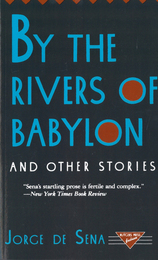
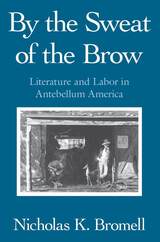
In chapters on Thoreau, Melville, Hawthorne, Rebecca Harding Davis, Susan Warner, Harriet Beecher Stowe, and Frederick Douglass, Nicholas Bromell argues that American writers generally sensed a deep affinity between the mental labor of writing and such bodily labors as blacksmithing, house building, housework, mothering, and farming. Combining literary and social history, canonical and noncanonical texts, primary source material, and contemporary theory, Bromell establishes work as an important subject of cultural criticism.
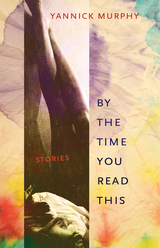
A gathering of luminescent stories that illustrates how fraught and contingent the simplest of lives can be, and the often unexpected means available to each of us for our own salvation
The truths revealed and the lives upended in the 13 stories that make up Yannick Murphy’s By the Time You Read This are at once singularly foreign and uncannily familiar. A wife pens a series of suicide notes to her family that verge on the comic, hovering between the tyrannical and the absurd. A mother obsesses over what her child eats. A young girl left with caretakers in New York draws on her potent imagination with consequences in real life that are both liberating and disastrous. In a college application essay a young woman finally begins to make sense of the troubling vicissitudes of her existence. A young French girl departs for America with her reprehensible beau to find she’s as much a stranger to herself abroad as she was at home. As with her previous novels and story collections, Murphy’s keen rendering of these disparate, complex lives illuminate in ways both quiet and startling our capacity for deliverance and devastation through daring acts of self-invention.

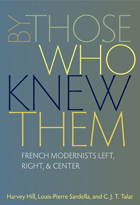
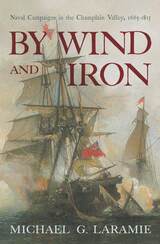
For more than 150 years, the natural invasion route along the waterways of the Champlain and Richelieu valleys into northeastern North America was among the most fiercely contested in the history of the continent. Whether the French and their Indian allies attacking British forts and settlements during the Seven Years’ War, the American Continentals striking north into Canada during the American Revolution, or the British battling French and later American forces in these wars and the War of 1812, it was clear to policy makers in Quebec, London, Paris, Philadelphia, and Washington that whoever controlled this corridor and its lakes and rivers, controlled the heart of the continent. In By Wind and Iron: Naval Campaigns in the Champlain Valley, 1665–1815, Michael G. Laramie details the maritime history of this region from the first French fortifications along the Richelieu River in the late seventeenth century through the tremendous American victory over the British at the Battle of Plattsburgh on Lake Champlain in 1814. Using period letters, journals, and other primary source materials, the author examines the northeastern waterways and their tributaries within the framework of the soldiers and sailors who faced the perils of the campaigns, while at the same time clarifying the key role played by this region in the greater struggle for North America and American independence.
In support of the narrative, the book also contains appendices that include after action reports from various fleet commanders, tables of fleet strengths, additional battle maps, a glossary, and a dictionary of lake warships with notes on vessel types, typical armament, construction, deployment, and fates.

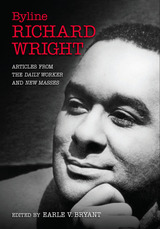
A writer perhaps best known for the revolutionary works Black Boy and Native Son, Richard Wright also worked as a journalist during one of the most explosive periods of the 20th century. From 1937 to 1938, Wright turned out more than two hundred articles for the Daily Worker, the newspaper that served as the voice of the American Communist Party. Byline, Richard Wright assembles more than one hundred of those articles plus two of Wright’s essays from New Masses, revealing to readers the early work of an American icon.
As both reporter and Harlem bureau chief, Wright covered most of the major and minor events, personalities, and issues percolating through the local, national, and global scenes in the late 1930s. Because the Daily Worker wasn’t a mainstream paper, editors gave Wright free rein to cover the stories he wanted, and he tackled issues that no one else covered. Although his peers criticized his journalistic writing, these articles offer revealing portraits of Depression-era America rendered in solid, vivid prose.
Featuring Earle V. Bryant’s informative, detailed introduction and commentary contextualizing the compiled articles, Byline, Richard Wright provides insight into the man before he achieved fame as a novelist, short story writer, and internationally recognized voice of social protest. This collection opens new territory in Wright studies, and fans of Wright’s novels will delight in discovering the lost material of this literary great.

In this book, David Ellis traces Lord Byron’s life from rented lodgings in Aberdeen and the crumbling splendors of Newstead Abbey to his final grand tour of Asia. Describing his exile from England as well as his subsequent travels in Italy and Greece, Ellis shows just how completely Byron’s experiences colored both his serious and comic writings, such as Childe Harold’s Pilgrimage and The Corsair. This is a fresh, concise, and clear-eyed account of the flamboyant poet’s life and work.
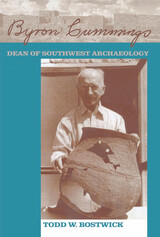
This book presents the first comprehensive examination of Cummings’ life, offering readers a greater understanding of his trailblazing work. Todd Bostwick elucidates Cummings’ many intellectual and cultural contributions, investigates the controversies in which he was embroiled, and describes his battles to wrest control of Arizona archaeology from eastern institutions that had long dominated Southwest archaeology.
Cummings saw the Southwest as an American wilderness where the story of cultural development revealed by the archaeologist and anthropologist was as important as it was in Europe. Bostwick’s meticulous account of his life reflects his great reverence for the region and pays tribute to a man whose dedication, mentoring, and friendship have forever sealed his place as The Dean.
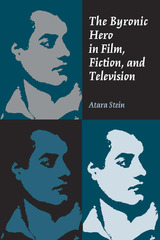
The Byronic Hero in Film, Fiction, and Television bridges nineteenth- and twentieth-century studies in pursuit of an ambitious, antisocial, arrogant, and aggressively individualistic mode of hero from his inception in Byron’s Manfred, Childe Harold, and Cain, through his incarnations as the protagonists of Westerns, action films, space odysseys, vampire novels, neo-Gothic comics, and sci-fi television. Such a hero exhibits supernatural abilities, adherence to a personal moral code, ineptitude at human interaction (muddled even further by self-absorbed egotism), and an ingrained defiance of oppressive authority. He is typically an outlaw, most certainly an outcast or outsider, and more often than not, he is a he. Given his superhuman status, this hero offers no potential for sympathetic identification from his audience. At best, he provides an outlet for vicarious expressions of power and independence. While audiences may not seek to emulate the Byronic hero, Stein notes that he desires to emulate them; recent texts plot to “rehumanize” the hero or to voice through him approbation and admiration of ordinary human values and experiences.
Tracing the influence of Lord Byron’s Manfred as outcast hero on a pantheon of his contemporary progenies—including characters from Pale Rider, Unforgiven, The Terminator, Alien, The Crow, Sandman, Star Trek: The Next Generation,and Angel—Atara Stein tempers her academic acumen with the insights of a devoted aficionado in this first comprehensive study of the Romantic hero type and his modern kindred.
Atara Stein was a professor of English at California State University, Fullerton. Her articles on the development of the Byronic hero have appeared in Popular Culture Review, Romantic Circles Praxis Series, Genders, and Philological Quarterly.

George Gordon Byron was a superb letter-writer: almost all his letters, whatever the subject or whoever the recipient, are enlivened by his wit, his irony, his honesty, and the sharpness of his observation of people. They provide a vivid self-portrait of the man who, of all his contemporaries, seems to express attitudes and feelings most in tune with the twentieth century. In addition, they offer a mirror of his own time. This first collected edition of all Byron’s known letters supersedes Prothero’s incomplete edition at the turn of the century. It includes a considerable number of hitherto unpublished letters and the complete text of many that were bowdlerized by former editors for a variety of reasons. Prothero’s edition included 1,198 letters. This edition has more than 3,000, over 80 percent of them transcribed entirely from the original manuscripts.
The final volume of this splendid edition contains a comprehensive index to the contents of the preceding volumes—the several thousand letters, the journals, the notes and biographical sketches. The index is prefaced by a generous selection of Byron’s aphorisms, bons mots, and memorable statements, culled by Leslie Marchand from the letters and journals and arranged under subject headings.

George Gordon Byron was a superb letter-writer: almost all his letters, whatever the subject or whoever the recipient, are enlivened by his wit, his irony, his honesty, and the sharpness of his observation of people. They provide a vivid self-portrait of the man who, of all his contemporaries, seems to express attitudes and feelings most in tune with the twentieth century. In addition, they offer a mirror of his own time. This first collected edition of all Byron’s known letters supersedes Prothero’s incomplete edition at the turn of the century. It includes a considerable number of hitherto unpublished letters and the complete text of many that were bowdlerized by former editors for a variety of reasons. Prothero’s edition included 1,198 letters. This edition has more than 3,000, over 80 percent of them transcribed entirely from the original manuscripts.
An enchanting epistolary saga ends with the publication of this volume. Volume XI: ‘For freedom’s battle’ contains the letters Byron wrote from Greece between August 1823 and April 9, 1824, ten days before his death. Also included are over fifty letters dating from 1807 to 1820 that have come to light since Leslie A. Marchand began this project ten years ago.
In the letters from Greece a new set of correspondents appears, and a new tone is apparent. Although occasionally playful, Byron is preoccupied with the revolution and his efforts to unite the Greeks in a common cause despite their discord. His chief correspondents are his business agents in the islands and his banker friend in Genoa, Charles Barry, to whom he writes frank accounts of daily affairs. His letters to Hobhouse and to John Bowring attempt to give a realistic picture of the Greek struggle. To Teresa Guiccioli he writes only short, dutiful postscripts in English to the longer letters addressed to her brother.
Among the additional letters that became available too late to take their chronological place in the earlier volumes are those discovered in 1976, locked in a trunk at Barclays Bank; all but one of these fourteen letters were written to Scrope Davies, Byron’s witty friend and drinking companion.

George Gordon Byron was a superb letter-writer: almost all his letters, whatever the subject or whoever the recipient, are enlivened by his wit, his irony, his honesty, and the sharpness of his observation of people. They provide a vivid self-portrait of the man who, of all his contemporaries, seems to express attitudes and feelings most in tune with the twentieth century. In addition, they offer a mirror of his own time. This first collected edition of all Byron’s known letters supersedes Prothero’s incomplete edition at the turn of the century. It includes a considerable number of hitherto unpublished letters and the complete text of many that were bowdlerized by former editors for a variety of reasons. Prothero’s edition included 1,198 letters. This edition has more than 3,000, over 80 percent of them transcribed entirely from the original manuscripts.
Byron’s brilliant epistolary saga approaches its end in this last full volume of his letters, from early October 1822 to his fateful departure for Greece in July 1823. During these months he was living in Genoa, with Teresa and her father and brother occupying an apartment in his house. Mary Shelley was staying with the Hunts in a house some distance away.
Byron enlarged his circle of English acquaintances, but his liveliest correspondence was still with John Murray, Kinnaird, Hobhouse, and Moore. Of special interest are his frank letters, half flirtatious, to Lady Hardy, those to Trelawny and Mary Shelley, and a growing number to Leigh Hunt and his brother John (publisher of The Liberal and of Byron’s poems after his break with Murray), discussing inter alia his thoughts about the continuation of Don Juan.
There is irony in Byron’s advice for a reconciliation between Webster and his wife Frances, whose matrimonial virtue Byron was proud to have spared in England. And there is pathos in his letters to his half-sister urging her and her children to join him in Italy, unaware that his missives to Augusta and her replies were scrutinized by Lady Byron. From April on, the letters are full of concern for support of the Greek forces and preparations for his departure.

George Gordon Byron was a superb letter-writer: almost all his letters, whatever the subject or whoever the recipient, are enlivened by his wit, his irony, his honesty, and the sharpness of his observation of people. They provide a vivid self-portrait of the man who, of all his contemporaries, seems to express attitudes and feelings most in tune with the twentieth century. In addition, they offer a mirror of his own time. This first collected edition of all Byron’s known letters supersedes Prothero’s incomplete edition at the turn of the century. It includes a considerable number of hitherto unpublished letters and the complete text of many that were bowdlerized by former editors for a variety of reasons. Prothero’s edition included 1,198 letters. This edition has more than 3,000, over 80 percent of them transcribed entirely from the original manuscripts.
The ninth volume in Leslie Marchand’s highly acclaimed, unexpurgated edition of Byron’s letters finds the poet in Pisa with Teresa Guiccioli. His unique journal, “Detached Thoughts,” is finished shortly after his arrival in November 1821, and he is drawn into Shelley’s circle (including Edward Williams, Thomas Medwin, John Taaffe, and later Trelawny). His letters to Mary Shelley, the Hunts, and Trelawny after the death of Shelley are especially moving. Another tragedy, the death of his daughter Allegra, leaves him deeply affected, and he refers to it time and time again.
Money problems continue to plague him, as do suspicions surrounding his political activities. Following a fracas with a half-drunken dragoon and the imprisonment of two of his servants because of it, Byron is forced to leave Pisa and install himself and Teresa in a villa near Leghorn. His correspondence with his publisher reveals increasing displeasure with Murray’s delays, indecision, and anxiety over Don Juan, and Byron finally breaks off the relationship. But his output of verse is in no way lessened, and by the end of this volume in 1822, he has finished six more cantos for Don Juan as well as other poems.

George Gordon Byron was a superb letter-writer: almost all his letters, whatever the subject or whoever the recipient, are enlivened by his wit, his irony, his honesty, and the sharpness of his observation of people. They provide a vivid self-portrait of the man who, of all his contemporaries, seems to express attitudes and feelings most in tune with the twentieth century. In addition, they offer a mirror of his own time. This first collected edition of all Byron’s known letters supersedes Prothero’s incomplete edition at the turn of the century. It includes a considerable number of hitherto unpublished letters and the complete text of many that were bowdlerized by former editors for a variety of reasons. Prothero’s edition included 1,198 letters. This edition has more than 3,000, over 80 percent of them transcribed entirely from the original manuscripts.
Born for Opposition opens with Byron in Ravenna, in 1821. His passion for the Countess Guiccioli is subsiding into playful fondness, and he confesses to his sister Augusta that he is not “so furiously in love as at first.” Italy, meanwhile, is afire with the revolutionary activities of the Carbonari, which Byron sees as “the very poetry of politics.” His journal, written while the insurrection grew, is a remarkable record of his reading and reflections while awaiting the sounds of gunfire. In spite of the turmoil, Byron stuck fast to his work. By the end of this volume, in October 1821, he is established in Pisa, having written Sardanapalus, Cain, and The Vision of Judgement.


George Gordon Byron was a superb letter-writer: almost all his letters, whatever the subject or whoever the recipient, are enlivened by his wit, his irony, his honesty, and the sharpness of his observation of people. They provide a vivid self-portrait of the man who, of all his contemporaries, seems to express attitudes and feelings most in tune with the twentieth century. In addition, they offer a mirror of his own time. This first collected edition of all Byron’s known letters supersedes Prothero’s incomplete edition at the turn of the century. It includes a considerable number of hitherto unpublished letters and the complete text of many that were bowdlerized by former editors for a variety of reasons. Prothero’s edition included 1,198 letters. This edition has more than 3,000, over 80 percent of them transcribed entirely from the original manuscripts.
In the fifth installment of this marvelous serial story, we read about Byron’s separation from his wife. Besides his pleading letters to Annabella asking her to reconsider, there are level-headed letters to Murray and Hobhouse and Hunt and Rogers—all written during the tempestuous time before his final departure from England. The accounts written during the ensuing summer, of Waterloo and the Rhine and Switzerland, reveal new depths of Byron’s maturing mind. But the very best letters here are the ones from Italy: freed from the inhibitions of English society, Byron’s spirit seems to expand and his letters reflect the joie de vivre that, despite his melancholy, was an inherent part of his character.

George Gordon Byron was a superb letter-writer: almost all his letters, whatever the subject or whoever the recipient, are enlivened by his wit, his irony, his honesty, and the sharpness of his observation of people. They provide a vivid self-portrait of the man who, of all his contemporaries, seems to express attitudes and feelings most in tune with the twentieth century. In addition, they offer a mirror of his own time. This first collected edition of all Byron’s known letters supersedes Prothero’s incomplete edition at the turn of the century. It includes a considerable number of hitherto unpublished letters and the complete text of many that were bowdlerized by former editors for a variety of reasons. Prothero’s edition included 1,198 letters. This edition has more than 3,000, over 80 percent of them transcribed entirely from the original manuscripts.
In this volume, Byron corresponds with writers such as Thomas Moore, Coleridge, Leigh Hunt, and “Monk” Lewis; with John Murray about the publication of The Corsair, Lara, and The Hebrew Melodies; and with many personal friends. A new interest is his association with the Drury Lane Theater. The crucial events of his private life at this time are his engagement to Anabella Milbanke and their marriage early in 1815—a marriage that was to last little more than a year. Especially revelatory are his letters to his fiancée and those to his long-time confidante, Lady Melbourne.
Volume IV includes all the letters from the beginning of 1814 to the end of 1815.

George Gordon Byron was a superb letter-writer: almost all his letters, whatever the subject or whoever the recipient, are enlivened by his wit, his irony, his honesty, and the sharpness of his observation of people. They provide a vivid self-portrait of the man who, of all his contemporaries, seems to express attitudes and feelings most in tune with the twentieth century. In addition, they offer a mirror of his own time. This first collected edition of all Byron’s known letters supersedes Prothero’s incomplete edition at the turn of the century. It includes a considerable number of hitherto unpublished letters and the complete text of many that were bowdlerized by former editors for a variety of reasons. Prothero’s edition included 1,198 letters. This edition has more than 3,000, over 80 percent of them transcribed entirely from the original manuscripts.
The third volume starts with Byron at the first crest of his fame following the publication of Childe Harold. It includes his literary letters to Tom Moore, frank and intimate ones to Hobhouse, pungent ones to Hanson and Murray, and his lively and amusing missives to Lady Melbourne, his confidante through all his love affairs. To her he describes the backwash of his tempestuous affair with Caroline Lamb, his emotional crises with Lady Oxford, the beginning of his liaison with his half-sister, Augusta Leigh, and his flirtation with Lady Frances Webster. The volume contains the letters of 1813 and the journal of 1813–1814, the first of his five incomparable journals.
The letters display, as Martin Fagg puts it, a “bewitching amalgam of the picturesque and the earthy, of arrogance and modesty, of vituperation and tenderness, of soulfulness and sheer irresistible high spirits.” They confirm Max Beerbohm’s opinion, “Byron’s letters are, I think, the best ever written—the fullest and most spontaneous.”

George Gordon Byron was a superb letter-writer: almost all his letters, whatever the subject or whoever the recipient, are enlivened by his wit, his irony, his honesty, and the sharpness of his observation of people. They provide a vivid self-portrait of the man who, of all his contemporaries, seems to express attitudes and feelings most in tune with the twentieth century. In addition, they offer a mirror of his own time. This first collected edition of all Byron’s known letters supersedes Prothero’s incomplete edition at the turn of the century. It includes a considerable number of hitherto unpublished letters and the complete text of many that were bowdlerized by former editors for a variety of reasons. Prothero’s edition included 1,198 letters. This edition has more than 3,000, over 80 percent of them transcribed entirely from the original manuscripts.
The first volume of Byron’s letters and journals covers his early years and includes his first pilgrimage to Greece and to the East, ending with his last letter from Constantinople on July 4, 1810, before his departure for Athens. Here is the direct record of his rapid development from the serious schoolboy to the facetious youth with ambivalent reactions to his perplexed mother, and the maturing man of extraordinary perceptions and sympathies and friendships. By the end of this volume he has already written English Bards and Scotch Reviewers (in part a spirited reaction to the reception of his earliest published work) and the first two Cantos of Childe Harold (published in 1812), which was to make him famous.

George Gordon Byron was a superb letter-writer: almost all his letters, whatever the subject or whoever the recipient, are enlivened by his wit, his irony, his honesty, and the sharpness of his observation of people. They provide a vivid self-portrait of the man who, of all his contemporaries, seems to express attitudes and feelings most in tune with the twentieth century. In addition, they offer a mirror of his own time. This first collected edition of all Byron’s known letters supersedes Prothero’s incomplete edition at the turn of the century. It includes a considerable number of hitherto unpublished letters and the complete text of many that were bowdlerized by former editors for a variety of reasons. Prothero’s edition included 1,198 letters. This edition has more than 3,000, over 80 percent of them transcribed entirely from the original manuscripts.
The second volume of Byron’s letters embraces his second year in Greece, his revealing accounts to Hobhouse and others of his life in Athens, his visit to Veli Pasha, and his return by Malta to England. It covers the period of the loss of his mother and of several of his closest friends, of his first acquaintance with Moore and Rogers, his maiden speech in the House of Lords, the publication of Childe Harold, and the resulting fame that brought him into Whig society. It marks the beginning of his correspondence with Lady Melbourne, who became the confidante of his liaisons with Lady Caroline Lamb and Lady Oxford, and who forwarded his first (rejected) proposal to Annabella Milbanke.
Leslie A. Marchand, the author of critical studies and of the definitive biography of Byron, has brought a lifetime of study to the major task of editing these letters. He has done it with a restraint and objectivity that allows Byron to come through to us with unimpeded clarity.

George Gordon Byron was a superb letter-writer: almost all his letters, whatever the subject or whoever the recipient, are enlivened by his wit, his irony, his honesty, and the sharpness of his observation of people. They provide a vivid self-portrait of the man who, of all his contemporaries, seems to express attitudes and feelings most in tune with the twentieth century. In addition, they offer a mirror of his own time. This first collected edition of all Byron’s known letters supersedes Prothero’s incomplete edition at the turn of the century. It includes a considerable number of hitherto unpublished letters and the complete text of many that were bowdlerized by former editors for a variety of reasons. Prothero’s edition included 1,198 letters. This edition has more than 3,000, over 80 percent of them transcribed entirely from the original manuscripts.
Byron’s epistolary saga continues con brio in this volume. At the start of 1818 he sends off the last canto of Childe Harold and abandons himself to the debaucheries of the Carnival in Venice. At the close of 1819 he resolves to return to England but instead follows Teresa Guiccioli to Ravenna. In the meantime he writes three long poems and two cantos of Don Juan, whose bowdlerization he violently protests; he breaks off with Marianna Segati, copes with his amorous “tigress” Margarita Cogni, then falls passionately in love with the young Countess Guiccioli; he thinks seriously of emigrating to South America; he takes custody of his little daughter Allegra and becomes increasingly fond of the child. The Shelleys visit him, as does Thomas Moore, to whom he entrusts his memoirs (burned after his death). The letters to friends are a marvelous outpouring of funny anecdotes, practical talk, discussions of his poems, statements of his beliefs. The love letters are in a class by themselves.


From Attali's "cold social silence" to Baudrillard's hallucinatory reality, reproduced music has long been the target of critical attack. In Bytes and Backbeats, however, Steve Savage deploys an innovative combination of designed recording projects, ethnographic studies of contemporary music practice, and critical analysis to challenge many of these traditional attitudes about the creation and reception of music. Savage adopts the notion of "repurposing" as central to understanding how every aspect of musical activity, from creation to reception, has been transformed, arguing that the tension within production between a naturalizing "art" and a self-conscious "artifice" reflects and feeds into our evolving notions of creativity, authenticity, and community.
At the core of the book are three original audio projects, drawing from rock & roll, jazz, and traditional African music, through which Savage is able to target areas of contemporary practice that are particularly significant in the cultural evolution of the musical experience. Each audio project includes a studio study providing context for the social and cultural analysis that follows. This work stems from Savage's experience as a professional recording engineer and record producer.


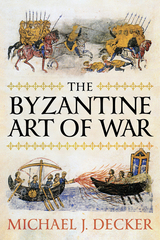
The Byzantine Art of War explores the military history of the thousand-year empire of the eastern Mediterranean, Byzantium. Throughout its history the empire faced a multitude of challenges from foreign invaders seeking to plunder its wealth and to occupy its lands, from the deadly Hunnic hordes of Attila, to the Arab armies of Islam, to the western Crusaders bent on carving out a place in the empire or its former lands. In order to survive the Byzantines relied on their army that was for centuries the only standing, professional force in Europe. Leadership provided another key to survival; Byzantine society produced a number of capable strategic thinkers and tacticians—and several brilliant ones. These officers maintained a level of professionalism and organization inherited and adapted from Roman models. The innovations of the Byzantine military reforms of the sixth century included the use of steppe nomad equipment and tactics, the most important of which was the refinement of the Roman mounted archer. Strategy and tactics evolved in the face of victory and defeat; the shock of the Arab conquests led to a sharp decline in the number and quality of imperial forces. By the eighth and ninth centuries Byzantine commanders mastered the art of the small war, waging guerrilla campaigns, raids, and flying column attacks that injured the enemy but avoided the decisive confrontation the empire was no longer capable of winning. A century later they began the most sustained, glorious military expansion of their history. This work further sketches the key campaigns, battles, and sieges that illustrate Byzantine military doctrine, vital changes from one era to another, the composition of forces and the major victories and defeats that defined the territory and material well-being of its citizens. Through a summary of their strategies, tactics, and innovations in the tools of war, the book closes with an analysis of the contributions of this remarkable empire to world military history.

This introductory booklet on Byzantine coinage, first published in 1982, has been updated and expanded to include a description of the creation of the coin collection at Dumbarton Oaks. This new edition marks the completion of the five volume series Catalogue of the Byzantine Coins in the Dumbarton Oaks Collection.
The booklet covers phases of the coinage, gold, silver, and copper coinage, types and inscriptions, and ruler representations. Tables of values corresponding with various times in the empire’s history, a list of Byzantine emperors, and a glossary are also provided.


The imperial court in Constantinople has been central to the outsider’s vision of Byzantium. However, in spite of its fame in literature and scholarship, there have been few attempts to analyze the Byzantine court in its entirety as a phenomenon. The studies in this volume aim to provide a unified composition by presenting Byzantine courtly life in all its interconnected facets.
One important theme that unites these studies is the attention paid to describing the effects of a change in the social makeup of the court during this period and the reflection of these changes in art and architecture. These changes in social composition, mentality, and material culture of the court demonstrate that, as in so many other aspects of Byzantine civilization, the image of permanence and immutability projected by the forms of palace life was more apparent than real. As this new work shows, behind the golden facade of ceremony, rhetoric, and art, there was constant development and renewal.

These vitae feature holy men and women who opposed imperial edicts and suffered for their defense of images, from the nun Theodosia whose efforts to save the icon of Christ Chalkites made her the first iconodule martyr, to Symeon of Lesbos, the pillar saint whose column was attacked by religious fanatics.
The second volume in this series introduces saints who were active during the period of the iconoclastic controversy in Byzantium (726–843). For almost a century and a half, theological and popular opinions were strongly divided on the question of the manufacture and veneration icons of Christ, the Virgin, and saints.
Life of St. Theodosia of Constantinople
Life of St. Stephen the Younger
Life of St. Anthousa of Mantineon
Life of St. Anthousa, Daughter of Constantine V
Life of the Patriarch Nikephoros I of Constantinople
Life of Sts. David, Symeon, and George of Lesbos
Life of St. Ioannikios
Life of St. Theodora the Empress
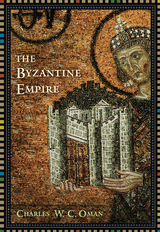
The Byzantine Empire centered at the city of Constantinople grew from a small Greek colonial village into the capital of the Eastern Roman empire. Ultimately, Byzantium represented what remained of Roman power in late antiquity. Established as the seat of Constantine the Great in 328 AD, the empire grew and matured over the centuries, reaching its pinnacle in the sixth century during the reign of Justinian and his loyal general, Belisarius. In the process of empire building, Byzantium battled the Goths, the Germanic tribes, the Persians, the Lombards, and ultimately the Islamic armies of the Near East. Byzantium remained a buffer against Muslim expansion, and by the time the remnants of the empire and the city of Constantinople were finally conquered by the Ottomans in the fourteenth century, European states to the west were able to resist any further encroachment.
In tracing the empire’s history from its humble beginnings through its ascendancy and final decay, distinguished historian Charles W. C. Oman blends his engaging narrative style with his impeccable command of primary source material. Here, Oman dispels the misconception that the Byzantine court was one plagued by corruption and intrigue—a canard that added “Byzantine” to the English language; instead, Byzantium was one of the most stable governments of late antiquity. Never before reprinted in paperback, The Byzantine Empire is a model of concise popular scholarship.
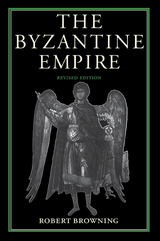


Only in the last decade has much serious attention been paid to the Byzantine garden, so indirect is the mass of information, both in literature and the visual arts, that is available for scholars. Byzantine Garden Culture, based on papers delivered at a colloquium at Dumbarton Oaks, is the first book devoted to the subject.
Individual essays discuss Byzantine conceptions of paradise, the textual evidence for monastic horticulture, animal and game parks, herbs in medicinal pharmacy, and the famous illustrated copy of Dioskorides’s herbal manual in Vienna. An opening chapter explores questions and observations from the point of view of a non-Byzantine garden historian, and the closing chapter suggests possible directions for future scholarship in the field.
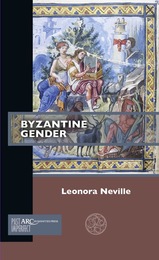


Written by specialists in several disciplines, this volume explores the parameters and significance of magic in Byzantine society, from the fourth century to after the empire's fall. The authors address a wide variety of questions, some of which are common to all historical research into magic, and some of which are peculiar to the Byzantine context.
The authors reveal the scope, the forms, and the functioning of magic in Byzantine society, throwing light on a hitherto relatively little-known aspect of Byzantine culture, and, at the same time, expanding upon the contemporary debates concerning magic and its roles in pre-modern societies.

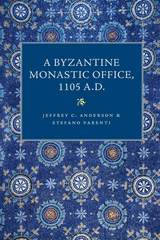

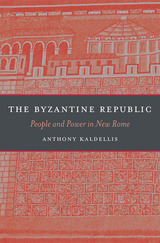
Although Byzantium is known to history as the Eastern Roman Empire, scholars have long claimed that this Greek Christian theocracy bore little resemblance to Rome. Here, in a revolutionary model of Byzantine politics and society, Anthony Kaldellis reconnects Byzantium to its Roman roots, arguing that from the fifth to the twelfth centuries CE the Eastern Roman Empire was essentially a republic, with power exercised on behalf of the people and sometimes by them too. The Byzantine Republic recovers for the historical record a less autocratic, more populist Byzantium whose Greek-speaking citizens considered themselves as fully Roman as their Latin-speaking “ancestors.”
Kaldellis shows that the idea of Byzantium as a rigid imperial theocracy is a misleading construct of Western historians since the Enlightenment. With court proclamations often draped in Christian rhetoric, the notion of divine kingship emerged as a way to disguise the inherent vulnerability of each regime. The legitimacy of the emperors was not predicated on an absolute right to the throne but on the popularity of individual emperors, whose grip on power was tenuous despite the stability of the imperial institution itself. Kaldellis examines the overlooked Byzantine concept of the polity, along with the complex relationship of emperors to the law and the ways they bolstered their popular acceptance and avoided challenges. The rebellions that periodically rocked the empire were not aberrations, he shows, but an essential part of the functioning of the republican monarchy.
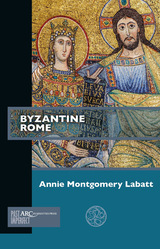


Following its initial publication in 2005, A Byzantine Settlement in Cappadocia has become a seminal work in interpreting the rich material remains of Byzantine Cappadocia. In the first systematic site survey from the region, at the settlement known as Çanlı Kilise in Western Cappadocia, the careful mapping and documentation of rock-cut and masonry architecture and its decoration led to a complete reexamination of the place of Cappadocia within the larger framework of Byzantine social and cultural developments. This revised edition builds upon its predecessor with an updated preface, a new bibliography, and a new master map of the Çanlı Kilise site.
Based on four seasons of fieldwork, Ousterhout challenges the commonly accepted notion that the rock-cut settlements of Cappadocia were primarily monastic. He proposes instead that the settlement at Çanlı Kilise was a town, replete with mansions, hovels, barns, stables, storerooms, cisterns, dovecotes, wine presses, fortifications, places of refuge, churches, chapels, cemeteries, and a few monasteries—that is, features common to most Byzantine communities. A Byzantine Settlement in Cappadocia has led to a rethinking of such sites and to a view of Cappadocia as an untapped resource for the study of material culture and daily life within the Byzantine Empire.

The Byzantine Shops at Sardis form a complex of commercial establishments lining the south wall of Sardis's renowned synagogue and bath complex. They offer scholars a unique opportunity to study urban life and commercial architecture in the Late Antique period. Remarkably well preserved, these shops provide economic data vital to an understanding of the trade and commerce of their time.
J. Stephens Crawford was a primary excavator of the shops and has worked at contemporary sites in Asia Minor. His first-hand insights elucidate his publication of the functions of the shops, which include dye shops, glass shops, a “hardware store,” and a restaurant. Crawford explores the evidence of religious diversity in the shops, where Jews and Christians lived and worked side by side. The contributors to this volume include Martha Goodway, George M. A. Hanfmann, Jane Ayer Scott, Pamela Vandiver, and Michael Weishan. Descriptions of the finds, which are extensively illustrated, are contributed by J. A. Scott. A comprehensive chapter of architectural comparanda from Asia Minor, Greece, Egypt, and the Near East presents some interesting parallels. Pamela Vandiver and Martha Goodway of the Smithsonian Conservation Laboratory provide an appendix of analyses of metal and fruit residues from the crucibles found in the shops, and a numismatic appendix summarizes the currency by mint.

The Byzantine Sinbad collects The Book of Syntipas the Philosopher and The Fables of Syntipas, both translated from Syriac in the late eleventh century by the scholar Michael Andreopoulos.
Originally written in Persian and part of a multilingual and multicultural medieval storytelling tradition, The Book of Syntipas recounts how the Persian king Cyrus’s unnamed son—a student of the fictional philosopher Sinbad, who is known in Greek as Syntipas—is falsely accused of rape by a royal concubine. While the young man awaits execution, seven philosophers and the concubine attempt to influence Cyrus’s judgment. After seven days of storytelling, the son is exonerated and demonstrates the wisdom he learned from Syntipas.
The sixty-two moral tales in The Fables of Syntipas are inspired mainly by the tradition of Aesop but include fifteen that are uniquely attributed to the philosopher.
This volume is the first English translation to bring together Andreopoulos’s Byzantine Greek texts.

Slavery may no longer exist as a legal institution, but we still find many forms of non-freedom in contemporary societies. It is a troubling paradox, and one this book addresses by considering a period in which the definition of slavery and freedom proved considerably flexible. Between more familiar forms of slavery—those of antiquity and of the Americas—the institution as it was practiced and theorized in the Byzantine Mediterranean was of a different nature.
Looking at the Byzantine concept of slavery within the context of law, the labor market, medieval politics, and religion, Youval Rotman illustrates how these contexts both reshaped and sustained the slave market. By focusing on a period of great change, his historical analysis brings a new perspective to concepts of slavery and freedom. In this period, when Byzantium had to come to terms with the rising power of the Islamic state, and to fight numerous wars over territory and economic interests, Rotman traces a shift in the cultural perception of slaves as individuals: they began to be seen as human beings instead of private property. His book analyzes slavery as a historical process against the background of the political, social, and religious transformation of the Mediterranean world, and demonstrates the flexible and adaptable character of this institution.
Arguing against the use of the term “slavery” for any extreme form of social dependency, Rotman shows instead that slavery and freedom are unrelated concepts. His work offers a radical new understanding of the geopolitical and religious dynamics that have defined and redefined slavery and freedom, in the past and in our own time.
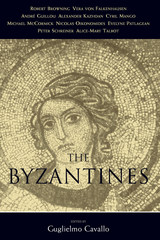
Through a series of remarkably detailed composite portraits, an international collection of distinguished scholars has created a startlingly clear vision of the Byzantines and their social world. Paupers, peasants, soldiers, teachers, bureaucrats, clerics, emperors, and saints—all are vividly and authentically presented in the context of ordinary Byzantine life. No comparable volume exists that so fascinatingly recovers from the past the men and women of Byzantium, their culture and their lifeways, and their strikingly modern worldview.


This book introduces the great civilization of Byzantium and shows the centrality of Byzantium’s role in world history. It also celebrates the founding by Robert Woods Bliss and Mildred Bliss of one of the major institutions devoted to the study of that civilization, the Byzantine Center at Dumbarton Oaks in Washington, D.C.
Through seven interrelated chapters, which were originally given as lectures at two meetings held in Washington in 1990 and 1991 to honor the fiftieth anniversary of Dumbarton Oaks, the contributors demonstrate the place of Byzantine civilization in world history—both Eastern and Western. At the same time, they show the place of Dumbarton Oaks in interpreting that civilization for what its founders called “an everchanging present.”
The first essay, written by Milton Anastos, a scholar who first came to Dumbarton Oaks in 1941, one year after the founding of the Byzantine Center, is devoted to the institution itself and to the role that it has played in Byzantine Studies over the past fifty years. The four following chapters, by Speros Vryonis, Dimitri Obolensky, Irfan Shahîd, and Angeliki Laiou, discuss the relationships between Byzantium and its neighboring civilizations, Islamic, Slavic, and Western European, and display the great legacy that Byzantium left to those cultures. The two final essays, by Gary Vikam and Henry Maguire, present Byzantine art, today the best known aspect of Byzantine achievement, and discuss its reception by modern critics and historians.





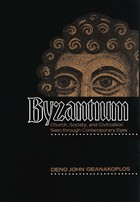
Byzantium is much more than a sourcebook. The running commentary reflects the most recent scholarly research in Byzantine studies and places each translated source in its precise historical context. Through the use of both primary sources and commentary, Geanakoplos has represented in all its richness and complexity one of the world's great civilizations. There is no comparable book on Byzantine history and civilization in any language.

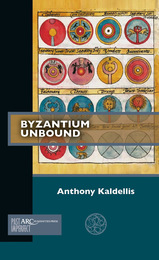
READERS
Browse our collection.
PUBLISHERS
See BiblioVault's publisher services.
STUDENT SERVICES
Files for college accessibility offices.
UChicago Accessibility Resources
home | accessibility | search | about | contact us
BiblioVault ® 2001 - 2024
The University of Chicago Press









